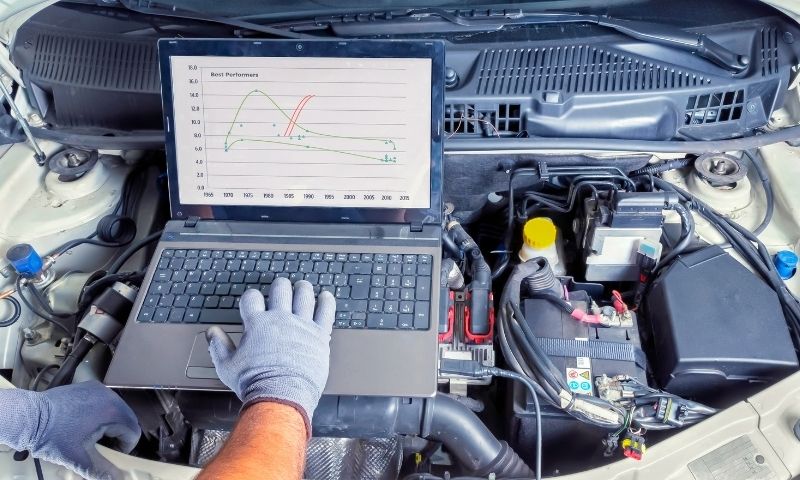A Leading Resource Built By Automotive Lovers, For Automotive Lovers.
We’ve helped consumers around the world make their purchasing decisions.
Latest Articles
When a battery backup box stops working, it stops providing power during a power outage. Connected devices will lose functionality. First, charge the battery for 24 hours. If the problem… When a solar system’s battery dies, its voltage drops below 11 volts. The charge controller stops charging the battery, leading to power loss. Common causes include a high current discharge… When a RAID controller battery fails, the cache battery cannot protect data during power failure. This can lead to data loss and corruption because the write cache is disabled. The… When a lithium-ion battery catches fire, it releases a lot of energy. This can cause explosions and toxic gases. Caution signs include swelling or overheating. A punctured battery can ignite,… When a mod battery vents, it releases heat and flammable gases, including hydrogen. This happens during thermal runaway when pressure builds up. Vent holes are essential for letting gases escape… As a battery ages, it experiences capacity degradation. This reduces energy storage and affects performance. In electric vehicles, this leads to range reduction. For stationary storage, energy output decreases. Aging… A swollen LiPo battery shows internal chemical problems, often from overcharging. Stop using it right away. Safely dispose of the battery to avoid fire hazards. A swollen battery is at… The voltage of a battery drops as it discharges. This reduction varies with battery chemistry and the resistive load or constant-wattage load it powers. Increased internal resistance causes more voltage… As temperature increases, a battery’s internal resistance decreases. This leads to improved battery performance and capacity thanks to enhanced electron mobility. However, higher temperatures can speed up aging. In contrast,… Used lead-acid batteries enter a recycling process. Lead plates are melted to create purified lead, while plastics are reprocessed. Acid is neutralized to prevent hazards. The EPA states that about… A NiMH battery with a voltage of 0 volts may suffer damage but can sometimes recover. Compared to Li-ion batteries, they are less affected by complete discharge. If the voltage… Exceeding a battery’s current capacity can cause voltage drops and excess heat. These issues worsen battery performance and may trigger chemical reactions, releasing toxic fumes. Safety systems help prevent overcharging,… DieHard battery warranties are non-transferrable. You need a sales receipt as proof of purchase for claims. Warranty terms range from 2 to 4 years, depending on the battery type. For… The e-Golf uses passive cooling for its battery. It keeps the battery temperature between 90°F and 120°F without an active system. In hot weather, performance reduces as the battery may… As a battery ages, its cold cranking amps (CCA) decline. This happens because repeated discharge-recharge cycles wear down the lead plates, reducing capacity. Signs of this decline include slow engine… During battery discharge, delta H (enthalpy change) is negative. This means the reaction releases energy. In a lead-acid battery, a redox reaction occurs. Chemicals change, allowing current flow. The overall… When a lithium battery is fully discharged, its voltage drops below a safe threshold. This can cause electrode damage and harmful chemical reactions. The depth of discharge affects its lifespan…. As a battery runs out, its voltage decreases due to rising internal resistance. This change reduces current and may produce heat. A fully charged car battery shows about 12.6 volts…. Adding another battery increases voltage in a series circuit, leading to a higher electric current as more charged particles flow. In a parallel circuit, the voltage remains the same, but… A copper anode in a depleted battery dissolves. During discharge, it releases copper ions into the electrolyte due to an electrochemical reaction. This causes capacity loss. When the reagents run… A dead battery has used up its reactants. In a lead acid battery, the chemical reactions produce lead sulfate from the electrodes and electrolyte. This reduces the voltage and stops… Reversing battery polarity switches the current’s direction in a circuit. This change can lead to unpredictable flow, damaging equipment. Common problems include blown fuses and damaged semiconductors. To prevent risks… During battery discharging, the battery releases stored electrical energy. Ions travel through the electrolyte from the positive to the negative electrode. Chemical reactions create lead sulfate from active materials. The… A completely discharged battery in a 2004 BMW X3 prevents the engine from starting. The warning light signals low charge or battery drain. Common issues include overnight drain from the… A lithium-ion battery transforms chemical energy into electrical energy. During charging, lithium ions flow from the cathode to the anode through the electrolyte. When discharging, they return, generating electricity. Key… Reversing a battery’s polarity switches the positive and negative terminals. This changes the direction of electrical current flow. It can create unintended electrical paths and potentially damage components. Some grounded… Placing your phone in the fridge can damage the battery. Rapid temperature changes cause condensation, introducing moisture. This moisture can harm phone components. Instead of using cold methods, keep your… When your iPhone battery health falls below 80%, it shows significant degradation. This affects performance and can lead to shutdown issues. Typical batteries last about 500 charge cycles. If your… Swallowing a lithium-ion battery poses serious risks. It can cause burns and damage to the throat and esophagus. Symptoms may include abdominal pain and difficulty breathing. Seek immediate medical attention… A short circuit can damage the wiring and terminals of an AGM battery. Brief shorts may not harm the battery, but long shorts can cause self-heating and risks like explosions….Battery Backup Box: What Happens When It Stops Working & Troubleshooting Steps
What Happens When a Solar System’s Battery Starts Dying: Signs, Causes, and Solutions
RAID Controller Battery Failure: Symptoms, Data Loss Risks, and Prevention Tips
Lithium-Ion Battery Fires: Causes, Safety Tips, and What Happens When They Ignite
What Happens When a Mod Battery Vents? Risks, Safety Measures, and Identification Guide
Battery Aging: What Happens When a Battery Ages and Its Impact on Performance
LiPo Battery Swelling: Causes, Risks, Safety Tips, and What to Do
Battery Voltage: What Happens During Discharge and Current Flow Explained
Battery Resistance: What Happens When Temperature Increases and Its Impact on Performance
What Happens to Used Lead Acid Batteries? Recycling, Environmental Impact, and Hazards
NiMH Battery at 0 Voltage: Causes of Discharge and Revive Tips for Recovery
What Happens to the Battery If It Exceeds Current Capacity: Risks and Performance Impact
What Happens to My DieHard Battery Warranty: Coverage, Terms, and Benefits Explained
eGolf Thermal Battery Cooling: What Happens with Passive vs Active Systems?
Cold Cranking Amps: What Happens as Your Battery Ages and Why It Matters
What Happens to Delta H When a Battery Discharges: Thermodynamic Effects Explained
Lithium Battery: What Happens When Fully Discharged and Recovery Tips
What Happens to Battery Voltage as It Runs Out: Causes of Voltage Drop and Battery Health
Adding Another Battery: What Happens to a Circuit’s Load and Performance?
What Happens to a Copper Anode in a Depleted Battery: Chemistry and Function Explained
What Happens to a Battery When It Dies: Chemistry, Discharge Effects, and Function
Reverse Battery Polarity: What Happens to a Circuit and Its Risks Explained
Battery Discharge: What Happens Inside a Battery During Discharging and Energy Transformation
What Happens Once Battery Completely Discharges: Troubleshooting Dead Battery Issues
Lithium-Ion Battery: What Happens During Charging and How It Affects Battery Life
Reverse Polarity in a Circuit: What Happens When Battery Connections are Reversed?
What Happens If You Use a Fridge to Cool Your Phone Battery? Risks and Safe Alternatives
iPhone Battery Degradation: Signs, Risks, and Maintenance Tips Explained
Swallowing a Lithium Ion Battery: Dangers, Effects, and Emergency Steps
What Happens if You Short Circuit an AGM Battery: Risks, Damage, and Safety Tips



